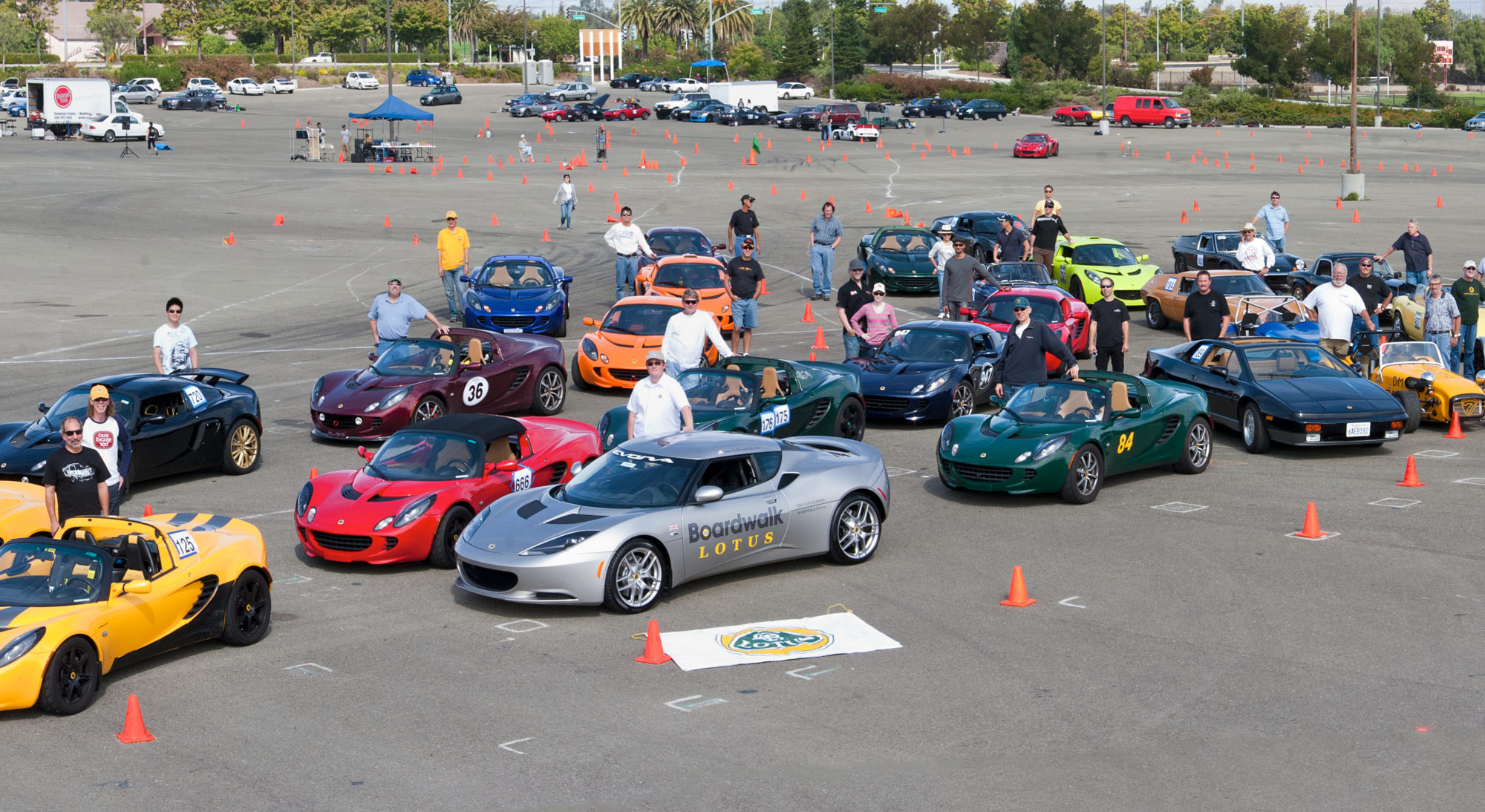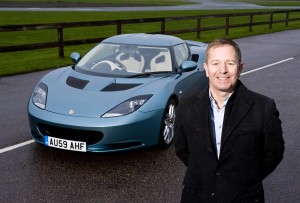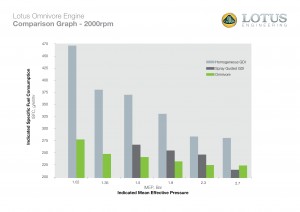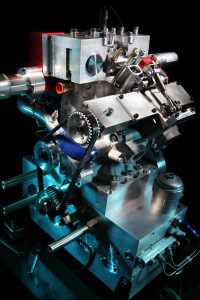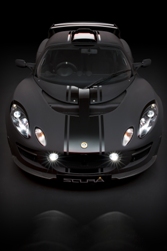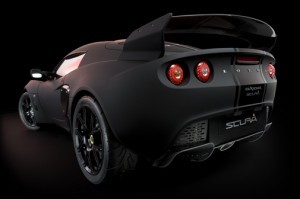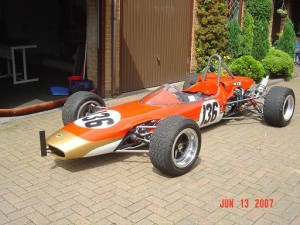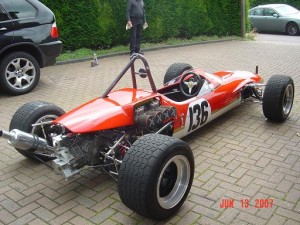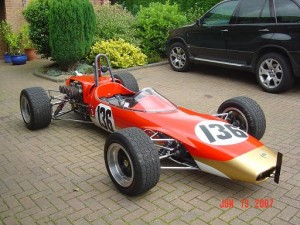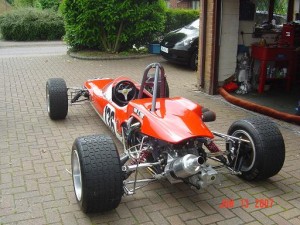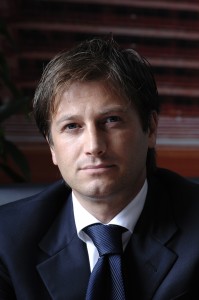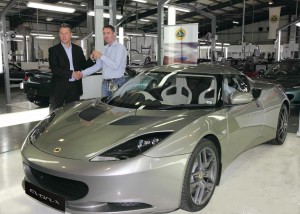
The track focussed homologated-for-the-road 2010 Model Year Lotus Exige Cup 260 takes design clues and technical innovations from the Lotus Exige GT3 racecar and combines with class leading emissions of just 199 g/km CO2 and exhilarating performance of 0-100 km/h in just 4.1 seconds.
· Extensive use of carbon fibre
· Motorsport lightweight wheels
· Ohlins 2-way adjustable dampers
· Rear chassis stiffness increased by 30%
The Lotus Exige Cup has developed a cult following and a dedicated fan base since the first Lotus Exige Cup 240 was unveiled in 2006. Over the last 4 model years several hundred Exige Cup Cars have been sold, either specifically for race and track use or for a pure road going driving experience. The latest Exige Cup 260, with 260 PS, takes the 38 kg weight savings introduced in the last years model, combines them with the extensive body and aerodynamic improvements and revisions introduced on the 2010 Exige in March 2009 and tops them off with new components and technologies to produce the most focused and pure Exige yet.
Roger Becker, Director of Vehicle Engineering for Lotus said, “The Lotus Exige Cup 260 is the epitome of the Lotus brand philosophy of performance through lightweight. Colin Chapman, founder of Lotus, once said “Adding power makes you faster on the straights; subtracting weight makes you faster everywhere” and the Exige Cup 260 totally proves this, being one of the most exhilarating, focussed and pure sportscars on the road today.”
The 2010 Model Year Exige Cup 260 is fully homologated for road use in Europe and key markets in Asia and North America – a must have for many race competition programmes where a road legal car has to be entered. The Lotus Exige Cup 260 is also eligible to compete in the Lotus Cup Europe race series, organized and run by LoTRDC.
The 2010 Model Year Exige Cup 260 takes the design and aerodynamic changes first introduced on the Exige S earlier this year to enhance the look and improve aerodynamic performance.
The lightweight, unpainted carbon chord composite rear wing is based on the design from the Exige GT3 road car concept shown at the Geneva Motorshow in 2007. Compared to the 2009 Model Year Exige Cup 260 tailgate-mounted wing, it is 181 mm wider and mounted 46 mm higher and 61 mm further back. It is attached to the rear bodyshell clam via rear end plates which not only increases the stiffness of the whole structure but also ensures that as much of the airflow as possible passes over the rear wing. This careful airflow management increases stability, reduces drag and, most importantly, maintains the impressive downforce figures of 42 kg at 160 km/h.
The restyled front end includes a larger, more angular air intake to help funnel more air through the radiator, to improve the efficiency of the engine. Ahead of the front wheels on either side of the main aperture, two larger air intakes increase the airflow to the twin oil coolers. Horizontal vanes, made from lightweight carbon fibre bisect these oil cooler air-intakes to stabilise the airflow to further increase the cooling efficiency.
Mounted below the three air intakes is a new aerodynamic splitter for the 2010 Model Year Exige. Made from lightweight carbon chord composite, the splitter is extended to wrap around the whole of the front end and chiseled side lips are raised to deflect air around the tyres to reduce drag.
Rear chassis stiffness increases by 30%
The Exige Cup 260 now has an evolution of the rear diffuser and structural shear panel based on the version developed for the Exige GT3 race car, which increases the lateral stiffness of the rear subframe by 30% further enhancing its outstanding handling.
The rear diffuser and structural shear panel links the subframe to the main chassis to give greatly increased lateral stiffness to the rear subframe suspension pickup points, resulting in better tyre contact patch control.
This stiffness is also more applicable to those drivers who race or take part in track days using slick tyres that can also be fitted to the Exige Cup 260.
Ohlins two-way adjustable dampers are now fitted as standard, adding even more personalisation of the driving characteristics so the driver can tune the Exige Cup 260 to their driving style and road or track conditions.
A restyled front end and new larger, rear wing that not only reduces drag, but also gives a more muscular stance enhancing the lightweight shrink-wrapped look of the whole car.
Like the 2010 Model Year Lotus Exige S, the 2010 Model Year Exige Cup 260 exploits the Lotus philosophy of using weight reduction to increase performance and reduce emissions. Fuel economy is impressive with an Official European Combined Cycle figure of 8.5 litres / 100 km (reduced from 9.1 litres / 100 km (combined) for the 2009 Model Year Exige Cup 260), a frugal 6.5 litres/100 km on the Official European Extra Urban Cycle and just 199 g/km of CO2 (reduced from 216 g/km of CO2 for the 2009 Model Year Exige Cup 260). Continuous engineering improvements over the last year including careful whole vehicle optimisation has enabled this sportscar to be even better for fuel economy and emissions.
Luke Bennett, Operations Director for Lotus Cars said, “The best thing about the Lotus Exige Cup 260 is its performance, on the track it’s sensationally quick in a straight line and attacks corners with razor-sharp precision. With the lightness and agility you’d expect from a Lotus and the almost telepathic feedback to the driver, this car produces an outrageously fun drive.”
The Exige Cup 260 follows this lightweight philosophy closely. Taking the already lightweight Lotus Exige S, the weight saving programme has looked at all areas of the car where components can be replaced with a lighter version (without pushing the costs beyond the reach of the serious track day driver or clubman racer) or where components can be removed completely without detracting from the purity of the driving experience:
Carbon fibre (resulting in a weight saving of 12kg):-
· Roof Panel
· FIA and HANS compliant driver and passenger seats*
· One piece carbon fibre dash top panel
· Rear tailgate
· Centre tunnel
· Front access panels
· Front splitter (carbon chord)
· Side air intake ducts
· Rear spoiler (carbon chord)
(* The seats are FIA compliant when fitted in conjunction with fixed seat runners that are available as a track only dealer fit option).
Lightweight components (resulting in a further weight saving of 22kg):-
· Lightweight ‘motorsport’ battery
· Ultra-light five spoke forged alloy wheels
· Revised rear engine subframe with lightweight coating
· Lightweight fly wheel
· Lightweight composite bulkhead panel replaces rear window
· Alloy supercharger U-bend pipes
Removing some other non essential components and equipment such as the interior and boot carpets, front mudflaps, battery cover, interior mirror, sunvisors, rear tailgate gas strut, results in a further weight saving of 4kg.
However, as optional extras should a customer wish, air conditioning and an interior noise reduction pack are available, together with the complete range of Lotus metallic, lifestyle and premium paint colours
The MY2010 Exige Cup 260 weighs in at just 890 kg, giving an impressive power to weight ratio of 288 hp / tonne (291 PS / tonne). But, of course, power to weight alone does not make a highly competitive race or track car, so in addition, the Exige Cup 260 has a formidable list of standard performance focused equipment, as follows:-
Lotus Launch Control and Lotus Traction Control – additions recommended for track driving
Lotus Launch Control and Lotus Traction Control was originally developed for the Lotus Exige GT3 racing programme
The launch control allows the driver to determine the number of revs they wish to use during a standing start. Having programmed that limit, the driver then holds their foot down fully on the throttle pedal and sidesteps the clutch pedal for a very quick departure from the line. The clutch damper cushions the severity of the clutch to transmission engagement to minimise the stresses to the drivetrain. The launch control also keeps wheel-spin at bay until 10 km/h (6 mph), after which the traction control assumes its duties.
As with launch control, the amount of traction control required can be dialled in from the driver’s seat and altered on the move to suit the characteristics of particular corners. The amount of traction control can be varied in over 30 increments from an optimum 7 percent tyre slip to completely inactive. The message display in the new instrument pack displays what degree of traction control is being currently utilised.
Wheels and Tyres
All new Lotus Sport lightweight forged alloy wheels, thought to be the lightest original equipment wheels in the world, weigh just 5.65 kg (front) and 7.75 kg (rear). These ultra lightweight wheels reduce the unsprung mass therefore further improving the handling and contribute a weight saving of approximately 800 g over the already super light forged 2009 Model Year Exige Cup 260 wheels. The wheels are shod with Lotus specific LTS construction and compound Yokohama A048 tyres† to maximise grip and achieve the ride and handling targets set by Lotus engineers.
† For GCC States Yokohama A048 LTS tyres are replaced with Toyo Proxes R888 tyres.
Safety Equipment
Lotus Exige Cup 260 cars have the safety equipment expected of a race car, with FIA and HANS compliant carbon fibre lightweight sports seats*, normal 3-point “Webb Lock” harnesses (four or six point driver and passenger seat belt harnesses are available for track use only).
(* The seats are FIA compliant when fitted in conjunction with fixed seat runners that are available as a track only dealer fit option).
A high tensile steel roll over hoop is now fitted with a body coloured Lotus Sport A-Frame as standard and the chassis is already pre-drilled to fit a full front roll cage – a simple dealer fit process involving just the removal of the roof panel for access prior to fitting. Completing the additional safety equipment is a FIA compliant electronic ignition kill switch, with cockpit and external activation, and a FIA compliant plumbed electrically activated fire extinguisher system, again with cockpit and external switches.
Like all current Lotus cars, the Exige Cup 260 is built around a very strong extruded and bonded aluminium chassis tub. Attached to the chassis is a sacrificial energy absorbing composite front structure designed to help absorb crash energy in the event of impact.
Suspension
To suit individual driving styles and road conditions, drivers will now be able to tune the Exige suspension with the Ohlins two-way adjustable dampers (which have 60 compression and 22 rebound settings) and ride height adjustment to reduce the ride height from 130 mm to 120 mm. An adjustable front anti-roll bar allows customers to tailor the handling characteristics of the car to their own requirements.
As the Exige Cup 260 cars are equipped for track use, a double shear track control arm brace is provided to cope with the expected kerb abuse during track racing or hard track day driving.
Brakes
The brake system includes large diameter 308 mm 2-piece cross-drilled and ventilated front discs and 282 mm cross-drilled and ventilated discs at the rear, upgraded Pagid RS14 sports brake pads set into the brake calipers (AP Racing two piece radially mounted, 4 piston at the front and Brembo sliding at the rear), and stainless steel braided brake hoses – all linked to the proven Lotus track-tuned servo-assisted four-channel ABS system that enhances braking performance and minimizes stopping distance without taking over from the skill of the driver.
Performance, Economy and Emissions
The Exige Cup 260 is one of the quickest road cars around a circuit. Key to this incredible track performance is the aerodynamic package, which produces 42 kg of downforce at 160 km/h (100 mph) increasing grip and stability at higher speeds. With a top speed of circa 245 km/h (152 mph) and a zero to 160 km/h (100 mph) in circa 9.9 seconds, 0 to 100 km/h in circa 4.1 seconds (0 to 60 mph in circa 4 seconds), the MY2010 Exige Cup 260 is the perfect partner for the serious racer. Combined Fuel Consumption is 8.5 l/100km and the CO2 emissions 199 g/km.
Engine
The supercharged and intercooled engine in the Exige Cup 260 has a maximum power output of 260 PS (257 hp) at 8000 rpm and a torque figure of 236 Nm (174 lbft) at 6000 rpm. This significant amount of extra power and torque now available together with the VVTL-i variable cam system ensures that there is a smooth and linear delivery of power from low engine speeds all the way to the maximum 8000 rpm (8500 rpm transient for 2 seconds). The Roots-type Eaton M62 supercharger (with a sealed-for-life internal mechanism meaning that it does not require the use of the engine’s oil) is run from the crankshaft and has an integral bypass valve for part load operation. Charge air (air under pressure from the supercharger) is cooled through an air-to-air intercooler (the air enters via the enhanced roof scoop) before being fed into the engine itself. All charge air ducting has been kept as short as possible with large diameter pipes to minimise restriction and maximise throttle response and efficiency. Four high capacity injectors and an uprated fuel pump add additional fuel under hard acceleration or continuous high speed driving – only on the track of course!
A lightweight flywheel is fitted (giving even greater flexibility and response to the gear change), a sports-type clutch plate and heavy duty clutch cover transfer the engine power and torque to the lightweight C64 six-speed gearbox (with an aluminium casing) – with the same perfectly spaced ratios as the Exige S. A torque-sensing limited slip differential is fitted as standard, with a plate type limited slip differential available as an option. An Accusump (engine oil accumulator unit) is included in the whole package as an oil reservoir back-up for extreme track use ensuring that, under those conditions, the engine oil pressure remains constant.
Electrical supply is provided by a lightweight motorsport battery which saves a massive 5 kg of weight sitting behind the rear axle – again weight saving is not just the removal of mass but ensuring that this mass is removed where it most affects performance and handling.
Power and torque curves
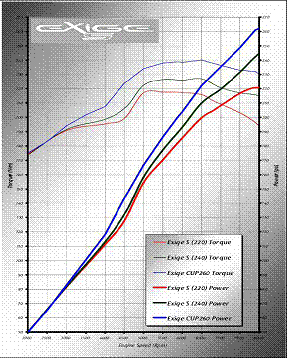
Roof Scoop
The Lotus Sport Exige Cup 260 has a high flow, full-length carbon roof scoop as part of the lightweight carbon roof panel, which not only saves 4 kg but also ensures efficient cooling through the intercooler, which in turn allows the Exige Cup 260 to gain a higher charge density in the cylinders improving efficiency further.
Specification
The standard specification Lotus Exige Cup 260 is road legal within the European Union, and can be registered for road use.
The Exige Cup 260 is available now for sale in Europe. Individual recommended retail prices for some major European markets are listed below:
Recommended retail prices of the standard road specification Lotus Exige Cup 260
UK (MSRP)
Recommended retail price (including VAT) is £45,000, (an additional £950 is charged for on the road costs. These include delivery, PDI, first service, number plates, first registration fee, valet, 12 months Road Fund Licence and a full tank of fuel.
Recommended retail prices of the standard road specification Lotus Exige Cup 260 for the following markets (MSRP) (including transport, delivery, local taxes and first service but excluding registration, license plates and or a full tank of fuel):
Belgium € 64.825
France € 64.200,–
Italy € 64.900,–
Switzerland CHF 94.700,–
Recommended retail prices for the following markets (MSRP) (including local taxes (excluding transport, registration, license plates and or a full tank of fuel):
Germany € 62.950,–
Recommended retail prices for Euro Zone Countries (MSRP) (excluding local taxes, transport, registration, license plates and or a full tank of fuel):
Euro Zone € 52.899,–
Warranty
The Lotus Exige Cup 260 will have a limited manufacturer’s warranty. The manufacturer’s warranty will be void if the car has ever been used on road or on track with “slick” or equivalent racing tyres. If the launch control facility is utilized, the warranty on related powertrain components is void. Clutch assembly and brake discs are excluded from the manufacturer’s warranty. The manufacturer’s warranty will not apply to any car which is subjected to race or competition use including but not limited to timed runs or laps. Purchaser’s Statutory rights are not affected.
